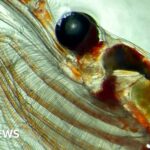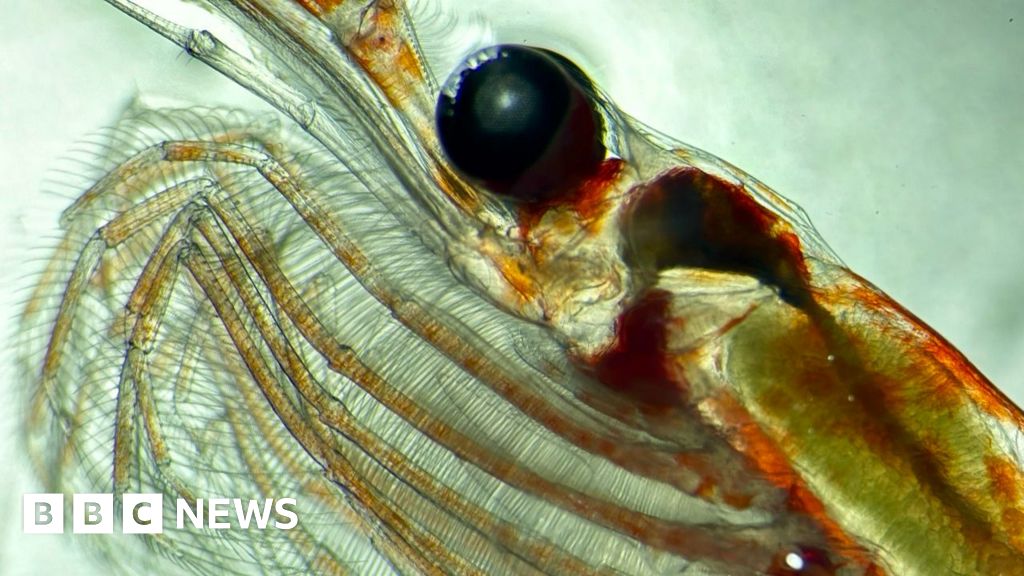A tiny, often overlooked animal known as zooplankton is playing a crucial role in mitigating global warming, according to groundbreaking research. These “unsung heroes” embark on an epic migration in the Southern Ocean, consuming phytoplankton and storing carbon in their bodies. This process locks away as much carbon as the annual emissions of approximately 55 million petrol cars, researchers reveal.
The findings, which have surprised scientists with their scale, highlight the zooplankton’s significant contribution to carbon sequestration. However, these creatures face growing threats from climate change and human activities, raising concerns about their future role in carbon storage.
The Unsung Heroes of the Ocean
Zooplankton, often sold as aquarium food, are now recognized for their vital environmental service. Dr. Guang Yang from the Chinese Academy of Sciences describes the findings as “remarkable,” prompting a reevaluation of the Southern Ocean’s carbon storage capacity. Co-author Dr. Jennifer Freer from the British Antarctic Survey emphasizes the zooplankton’s unique lifestyle, which includes a seasonal migration that plays a key role in carbon sequestration.
These small creatures, including copepods, krill, and salps, consume phytoplankton on the ocean surface. The carbon-rich phytoplankton is transformed into fat within the zooplankton, which is then slowly burned off as they descend into the deep ocean, effectively storing carbon away from the atmosphere.
The Science Behind the Migration
Prof. Daniel Mayor of the University of Exeter explains that zooplankton’s fat acts like a “battery pack,” slowly releasing carbon dioxide as they burn the stored fat deep in the ocean. This process, known as the seasonal vertical migration pump, transports 65 million tonnes of carbon annually to depths of at least 500 meters.
“This is roughly equivalent to the emissions from driving 55 million diesel cars for a year,” notes a greenhouse gas emissions calculator by the US EPA.
The study, published in the journal Limnology and Oceanography, utilized data dating back to the 1920s to quantify this carbon storage. The research team found that copepods contribute the most to this process, followed by krill and salps.
Challenges and Future Implications
Despite their crucial role, zooplankton face numerous threats. Warming waters and commercial krill harvesting pose significant risks to their populations. Prof. Angus Atkinson warns that these factors could reduce zooplankton numbers and limit carbon storage in the deep ocean.
Krill fishing companies harvested nearly half a million tonnes of krill in 2020, according to the UN. While legal, this practice has been criticized by environmentalists, including in the recent David Attenborough Ocean documentary.
Researchers stress the importance of incorporating these findings into climate models to better predict future warming scenarios. Prof. Atkinson explains, “If this biological pump didn’t exist, atmospheric CO2 levels would be roughly twice those as they are at the moment.”
Ongoing Research and Exploration
Efforts to understand the zooplankton migration cycle continue, with scientists like Dr. Freer and Prof. Mayor conducting fieldwork in the Southern Ocean. Their recent expedition aboard the Sir David Attenborough research ship involved collecting zooplankton samples under challenging conditions to further study their behavior and carbon storage capacity.
As the scientific community delves deeper into the complexities of zooplankton migration, the importance of these tiny creatures in the global carbon cycle becomes increasingly clear. The ongoing research underscores the need for conservation efforts to protect these vital organisms and their habitats.
For more insights on climate and environmental news, sign up for our Future Earth newsletter, delivered weekly by the BBC’s Climate Editor Justin Rowlatt.
 Zooplankton’s Epic Migration: A Hidden Ally in Combating Climate Change
Zooplankton’s Epic Migration: A Hidden Ally in Combating Climate Change Avoid These Costly Mistakes When Buying Phones, TVs, and Gadgets
Avoid These Costly Mistakes When Buying Phones, TVs, and Gadgets Chickadees Reveal New Insights into Spatial Memory Through Vision
Chickadees Reveal New Insights into Spatial Memory Through Vision Chickadees’ Spatial Memory: A Vision-Driven Discovery
Chickadees’ Spatial Memory: A Vision-Driven Discovery Yulia Putintseva Requests Spectator Removal at Wimbledon Over Safety Concerns
Yulia Putintseva Requests Spectator Removal at Wimbledon Over Safety Concerns